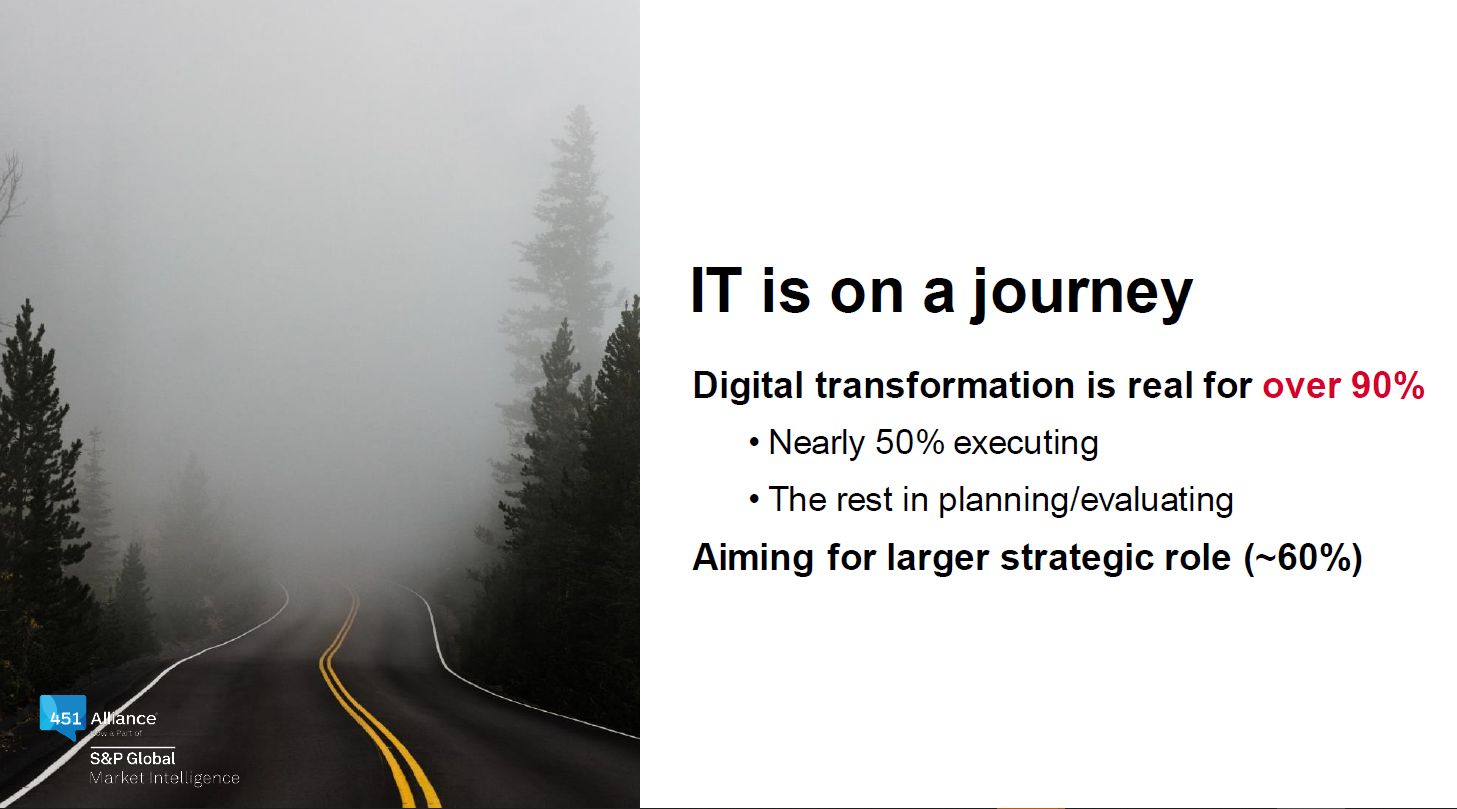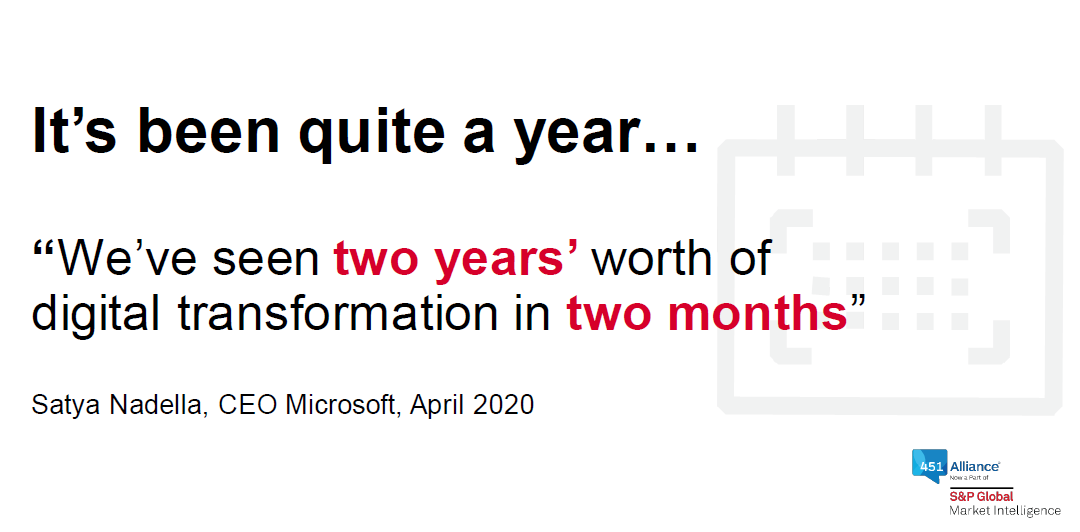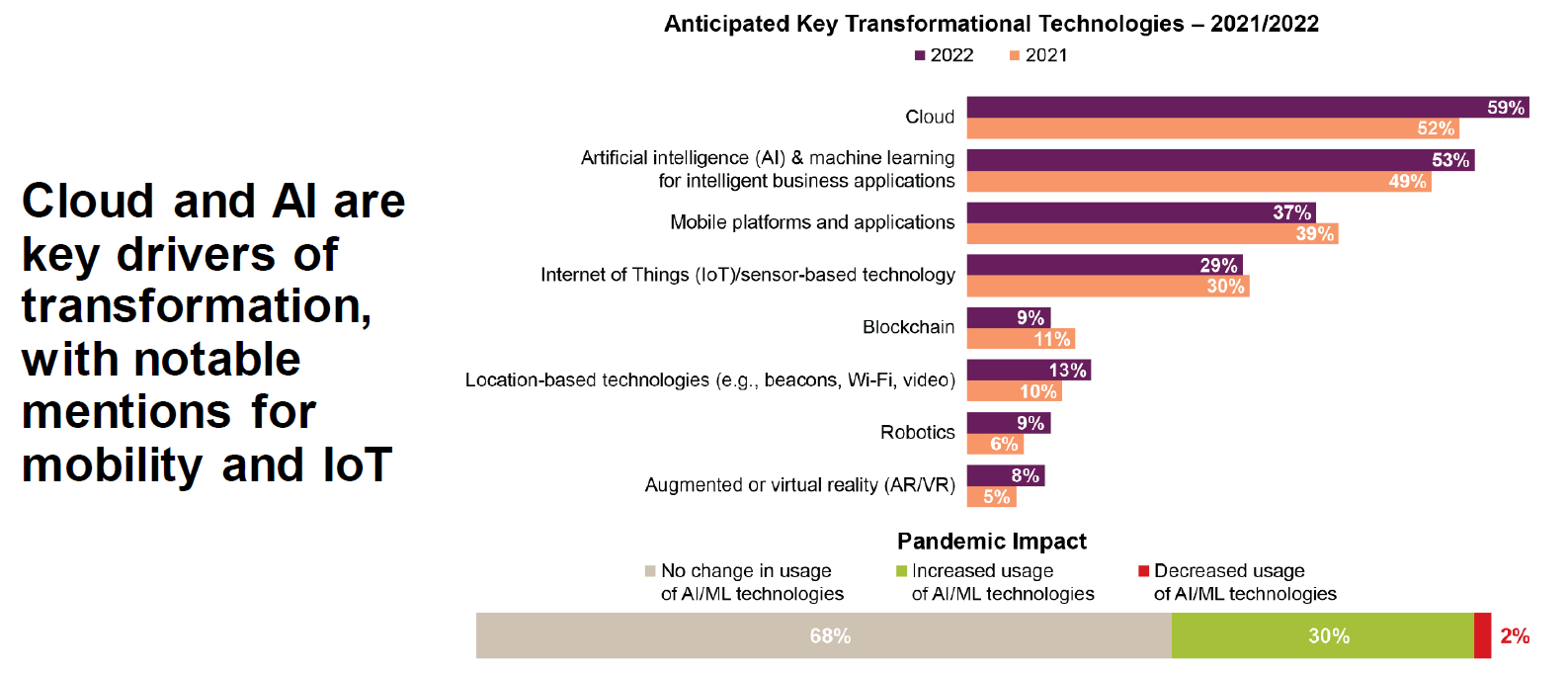
There’s a reason some old sayings persist through the centuries and become popular adages – they so often ring true. Take the well-known proverb, ‘Necessity is the mother of invention,’ and consider it in the context of the past 15 months for countless businesses. If ever there was a time for inventive problem-solving, in IT and across the business, it has been during the COVID-19 pandemic.
Nearly every organization has been confronted with the need to offload employees to sequestered work-from-home locations and connect them securely and productively to their colleagues and informational resources. Companies have also been charged with devising new ways to create mindshare and remain relevant among their customers. These and other challenges, which have posed a threat to many organizations’ very survival, have been met with creative IT solutions rooted in fundamentally transforming the way those businesses operate.
A ‘meaningless’ term behind a genuine movement
In his webinar, Driving IT Transformation in Extraordinary Times, Simon Robinson, head of research at 451 Research, began his discussion of digital transformation by commenting on the label itself. “Some believe it’s overused to the point where it’s somewhat meaningless,” he said. “But we still find it’s a useful way both to look at the market… [and] understand where people are in terms of their… digital transformation journey, [which] often dictates how they behave.”

Say what you will about the term, the phenomenon it describes is real and measurable. Moreover, the rollout of transformational technologies has gained momentum during the pandemic, with half of respondents to 451 Alliance surveys describing their IT activities during this time as being ‘transformative,’ and nearly all others saying such measures were in the planning stages.
Spending bumps likely to persist beyond COVID-19
While IT spending has generally risen to support the interest in transformational cloud and security technologies, Robinson reported that such investment levels may reflect a new normal. “Close to half… of respondents with increases in security spending due to COVID-19 expect these to be long-term or permanent increases,” he said.

“These are not just knee-jerk temporary responses. We see the organizations actually make some initial flexes to cloud, for example, then find, actually, there are other benefits to [doing] this. ‘Let’s double down on this and explore how we can use this in perhaps other parts of our business.’”
Digital laggards step up during outbreak
“Some verticals, like government and education, indicate an above-average response, with almost half saying that their digital transformation strategies have been somewhat accelerated as a result of the pandemic,” Robinson noted, referencing findings in Alliance surveys. “This is an example of organizations that, in the past, have tended to be less digitally mature… [and] of them showing some level of digital catch-up.”
For laggards and leaders alike, COVID-19 has represented an opportunity to address some of their long-term goals in an effort to solve today’s IT problems and proactively address those of tomorrow. Microsoft CEO Satya Nadella famously observed 12 months ago that the pandemic had dramatically accelerated the pace of digital transformation across the business landscape.

IT gains cred
One of the most significant developments during COVID-19 times is the rising reputation of IT within the business.
“For a great many organizations, [the pandemic] has fundamentally shifted the way business views IT,” Robinson observed. “We’ve heard from many of you [through Alliance surveys and in-depth interviews] who’ve made, frankly, amazing herculean efforts over the last year to ensure business continuity, resiliency, often supporting critical services [in] the industries that have, let’s face it, kept us fed, watered, heated, connected, educated and yes, entertained over the last year. If the business was not already aware just how reliant they are on IT before COVID-19, I should hope that they are now.”
He referenced comments made by an Alliance member that illustrate the shift in the perception of IT, from overhead to indispensable problem-solver:
COVID-19 was a very good wake-up call to where people started paying more attention to technology and how it actually helps them at the time of crisis, instead of looking at it as a cost factor. ‘Oh, you cost me too much, why do I need you?’ It’s like insurance that you buy. You may not notice all the hard work that goes into cloud, into my rationalizing this decision, or they are trying to protect business up until disaster hits. And when the disaster hits, I’m your best friend.
Financial services, 2,000-4,999 employees, $1bn-$2.49bn revenue
Cloud and AI lead the transformational parade
Robinson spoke about the growing adoption of cloud services and artificial intelligence as a means for enabling organizations – especially those beyond the tech curve – to do more with less. “Many organizations have initially reluctantly taken the leap [into cloud deployment] and found that the barriers were not quite as substantial or even as evident as they had thought. That’s not to say there are not challenges… but clearly, [cloud’s] role as an agent of transformation is well embedded.”
He added that, “30% [of those surveyed] said the pandemic would increase use of AI and ML, which I think augurs very well for future investment in this type of technology.”

People, process are pivotal to transformation
In discussing the role of transformative technologies, Robinson was careful to point out that, without parallel changes in process, new tech will not deliver the desired impact.
“Obviously, technology itself is not the be-all and end-all in a digital transformation story. It’s also about process. It’s about people,” he observed. “What’s been remarkable is just how much work many of you have done already…. [When considering] How much transformation this is driving… I think [it’s] a testament to the expertise of this community.”
Robinson’s presentation, part of the 451 Alliance’s monthly webinar series, is available at no cost to Alliance members who participate in our quantitative surveys or qualitative interviews. Webinars and accompanying slide decks are available exclusively on the 451 Alliance member portal, along with a complete library of on-demand research products. We thank our members for sharing their knowledge with peers through their participation in our studies.
